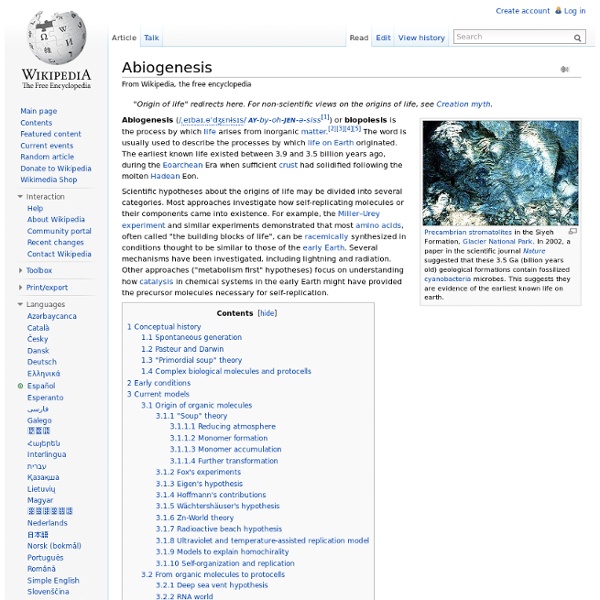File:Original Tay Bridge before the 1879 collapse.jpg
A Tempting Science
In middle school, we learned that scientists accept conclusions when they are supported by evidence. Were it only so simple. Take Richard Hoover. Working at NASA in Alabama, Hoover sliced up a piece of a Murchison “carbonaceous chondrites”, a meteorite rich in tarry, carbon-rich material. Looking at the slices with an electron microscope, he saw features in the carbon-rich material that looked like bacteria and fungi. These pictures were certainly evidence. Which is the Earthling? Both have filaments. Let that sink in for a moment. Hoover rejected the hypothesis that he was seeing bacteria from Earth that infected the rock after it had landed on Earth. This is Star Trek stuff. But his conclusion was not accepted by many in the community of people who call themselves “astrobiologists”. We might conjecture that astrobiologists rejected Hoover’s conclusion using the following reasoning: (a) We have never heard of microbes living in rocks in outer space. No. Awwww. Jesus in a pizza?
On Stephen Hawking, Vader and Being More Machine Than Human | Wired Opinion
photo: NASA / Flickr Click-click-click: This is what you hear when having a conversation with Stephen Hawking. No voice, no other sounds, no facial expressions. For those who know him, Hawking may be able to communicate through his eyes; but for the rest of us, his sole means of communicating is through infrared connection to his computer. Today, January 8, is Hawking’s birthday, yet on this day it’s worth examining just who and what we are really celebrating: the man, the mind or … the machines? Hawking has become a kind of a “brain in a vat.” In one version of Hawking’s eulogistic story, we praise the smartest person in the world, the brilliant physicist, one of the greatest cosmologists of our time. But in another version of Hawking’s story, we notice that he is more “incorporated” than any other scientist, let alone human being. Hélène Mialet is an anthropologist of science and technology interested in innovation and creativity. Editor: Sonal Chokshi @smc90
What is Synthetic Biology? « A Tempting Science
Many languages have words and phrases, called contranyms, that have two nearly opposite meanings. For example, a “citation” from Harvard University is good, but a “citation” from the Harvard University police is bad. If you run “fast”, you are moving at great speed; if you hold “fast”, you are not moving at all. “Synthetic biology” is a contranym. Among chemists, “synthetic biology” means the opposite. Waclaw Szybalski had yet a different meaning in mind when he coined the term “synthetic biology” in 1974 [2]. Szybalski had the experience of chemistry in mind when he coined the term. By 1974, “synthetic organic chemistry” had already encroached deep within biological territory. Today, the chemist’s vision for synthetic biology goes further. Given these nearly opposite uses of the same term, spectators are naturally puzzled. Francis Collins, director of the National Institutes of Health, captured a similar sentiment as applied to virus synthesis as a “synthetic biology” challenge.
File:Power plant Elektrėnai 076.jpg
Worms on special diet make fluorescent silk
Seil Collins, reporter (Image: Dr Natalia C. Tansil) A special diet is all it takes to make a silkworms produce fluorescent silk of a particular hue. According to researchers at the Institute of Materials Research and Engineering (IMRE) in Singapore, the process is "simple and cheap enough to be translated to an industrial scale". Aside from environmental advantages, the technique could also have medical applications.
File:Napoleon bivouac Wagram.jpg
BaraminologyClassification of Created Organisms
Copyright © 2000 by Creation Research Society. All rights reserved. Wayne Frair, Ph.D CRSQ Vol 37 No 2 pp82-91 September 2000 Invited Paper Abstract For decades creationists have been using the word “kind,” “type,” or “group” for their envisioned categories of genetically unrelated organisms including all those formed by the Creator during Creation Week. Introduction Basic human attributes include classification and identification. Interestingly, the Bible includes an account of God’s bringing to Adam all the terrestrial animals and birds (Genesis 2:19) so that Adam could observe and name them. In addition, Adam would learn something about God—the Designer. Taxonomy and Systematics Pondering these matters makes it easier for us to realize the basic importance of classification in biological studies of extinct and extant forms of life. However, there are different approaches used by scientists for studying patterns of life and for classification. Discontinuity Systematics and Baraminology
Суровая зима в Норильске ... о_О
Journal information Current price300 LJ Tokens Social capital2 259 Friends of14 204 Duration10 hours Minimal stake300 LJT View all available promo Суровая зима в Норильске ... о_О asaratov January 16th, 2013 Хотите посмотреть во что на днях превратился город Норильск посленескольких дней пурги и обильного снегопада? Это просто жесть!
File:Eugène Ferdinand Victor Delacroix 033.jpg
Vaticinia Nostradami
Image 3. Image 27. The Vaticinia Michaelis Nostradami de Futuri Christi Vicarii ad Cesarem Filium D. I. A. Interprete (The Prophecies of Michel Nostradamus on The Future Vicars of Christ to Cesar His Son, As Expounded by Lord Abbot Joachim), or Vaticinia Nostradami (The Prophecies of Nostradamus) for short, is a collection of eighty watercolor images compiled as an illustrated codex.[1] A version of the well-known Vaticinia de Summis Pontificibus of the 13th-14th century,[2] it was discovered in 1994 by the Italian journalists Enza Massa and Roberto Pinotti in the Biblioteca Nazionale Centrale di Roma (Central National Library) in Rome, Italy.[3] The document can be found in the library under the title Fondo Vittorio Emanuele 307. Alleged Nostradamian connections[edit] A postscript by Carthusian librarians states that the book had been presented by one Brother Beroaldus to cardinal Maffeo Barberini, who would later become Pope Urban VIII (1623–1644). Style[edit] Image 18. Source[edit]



